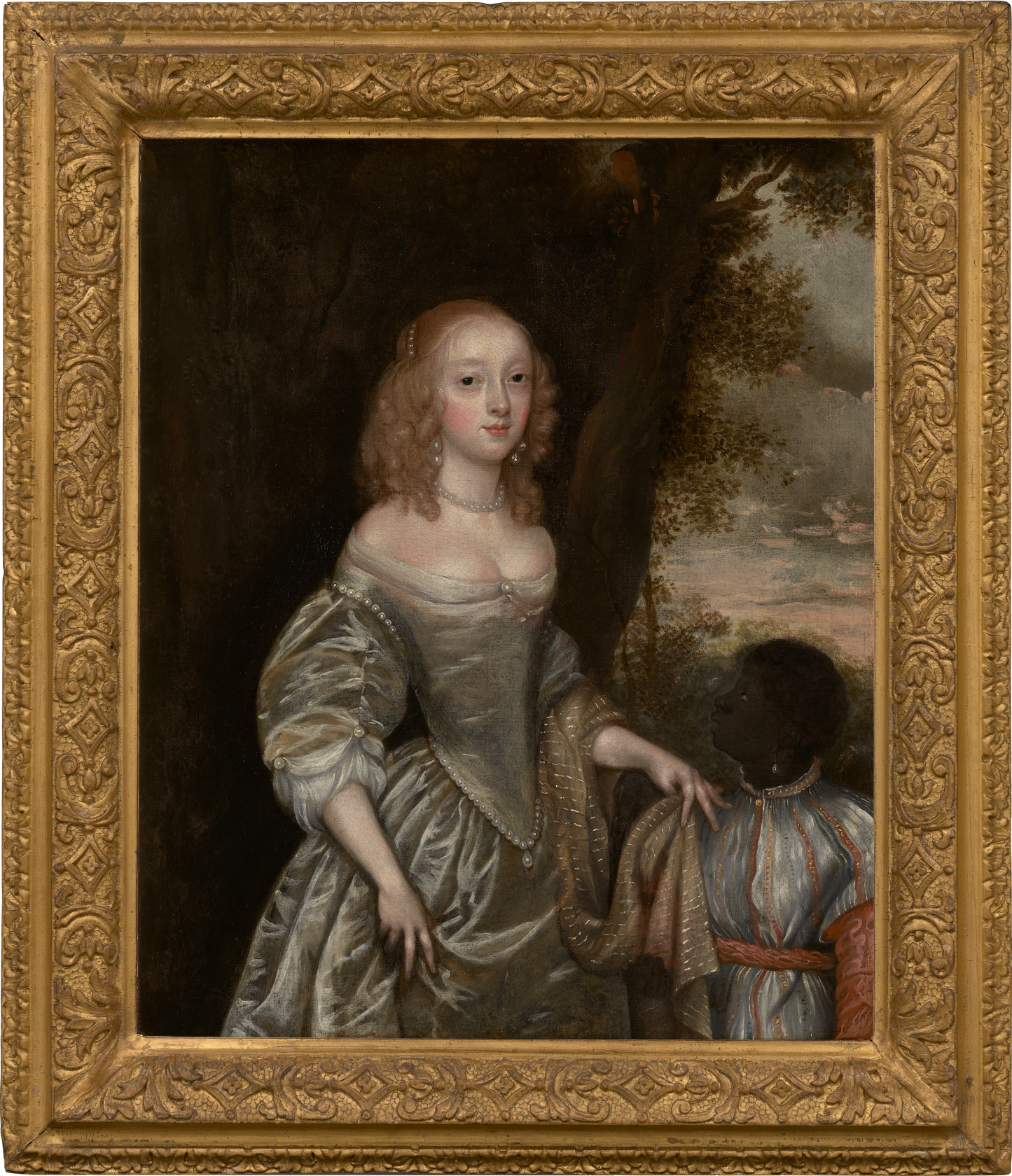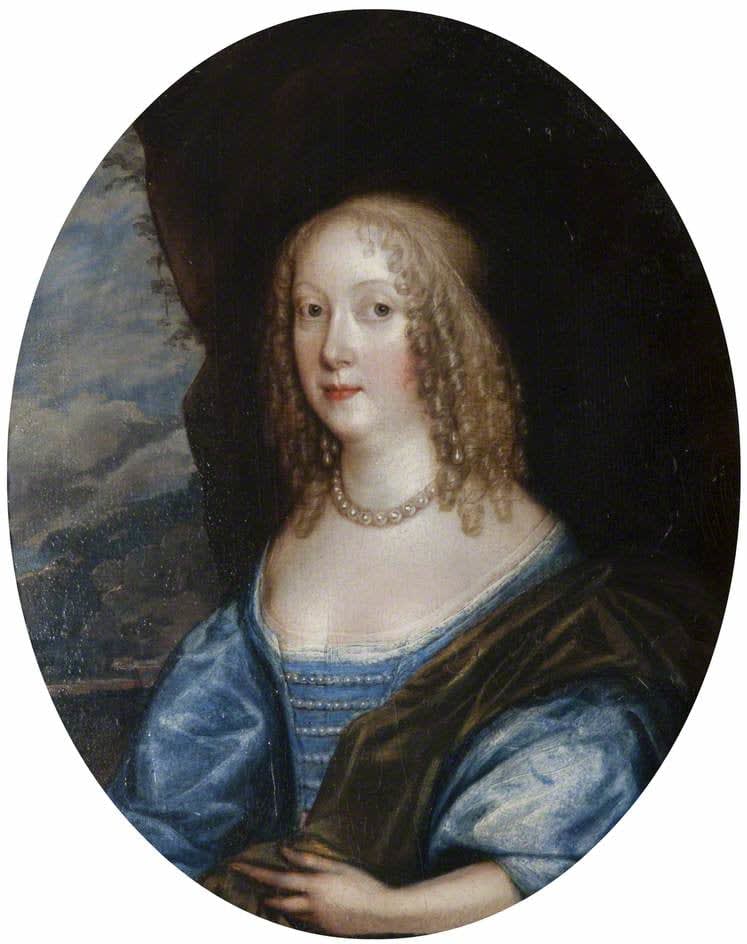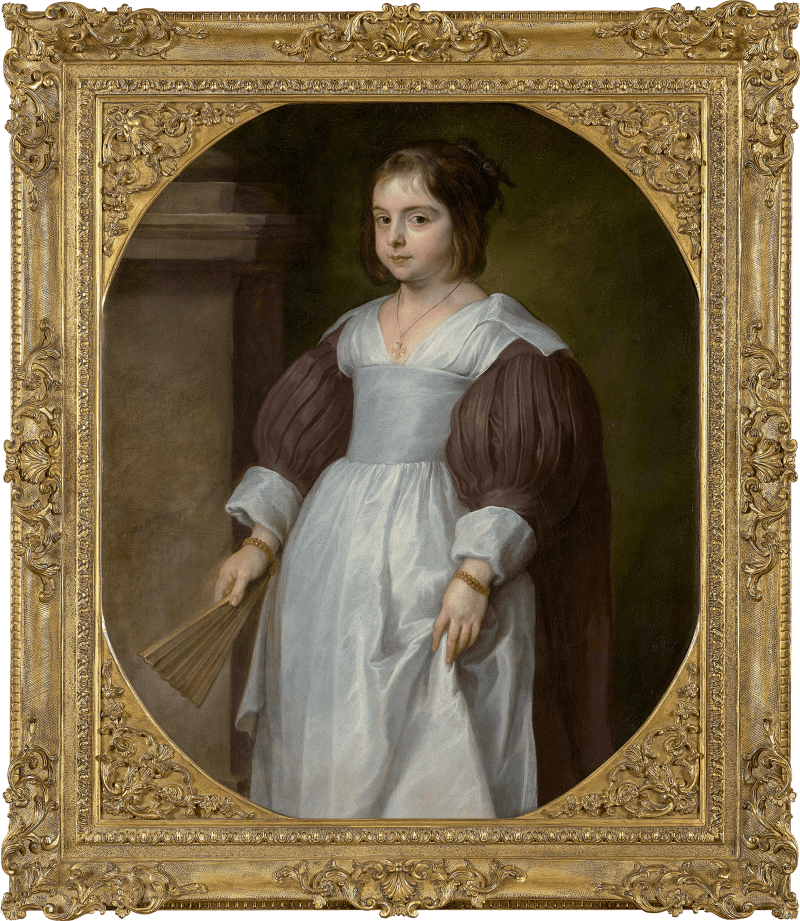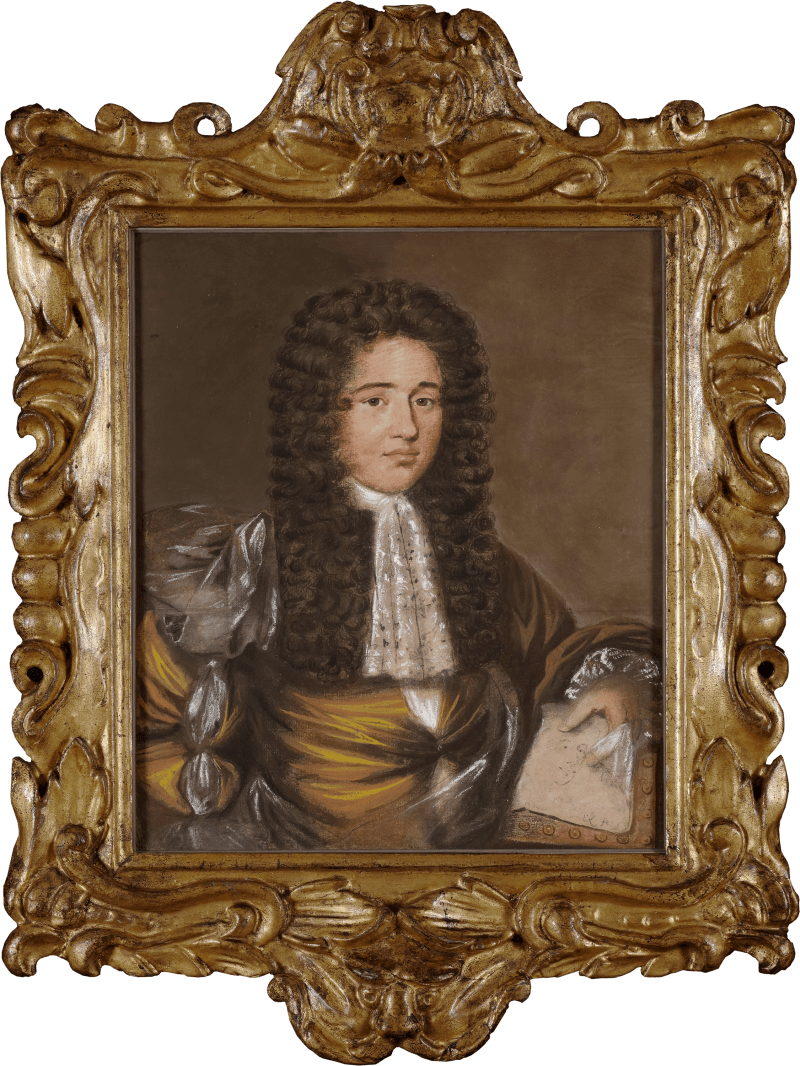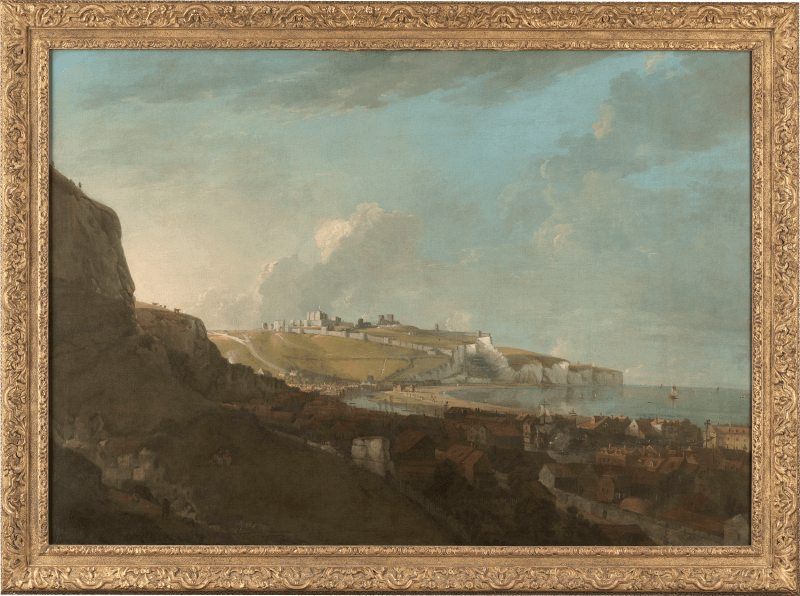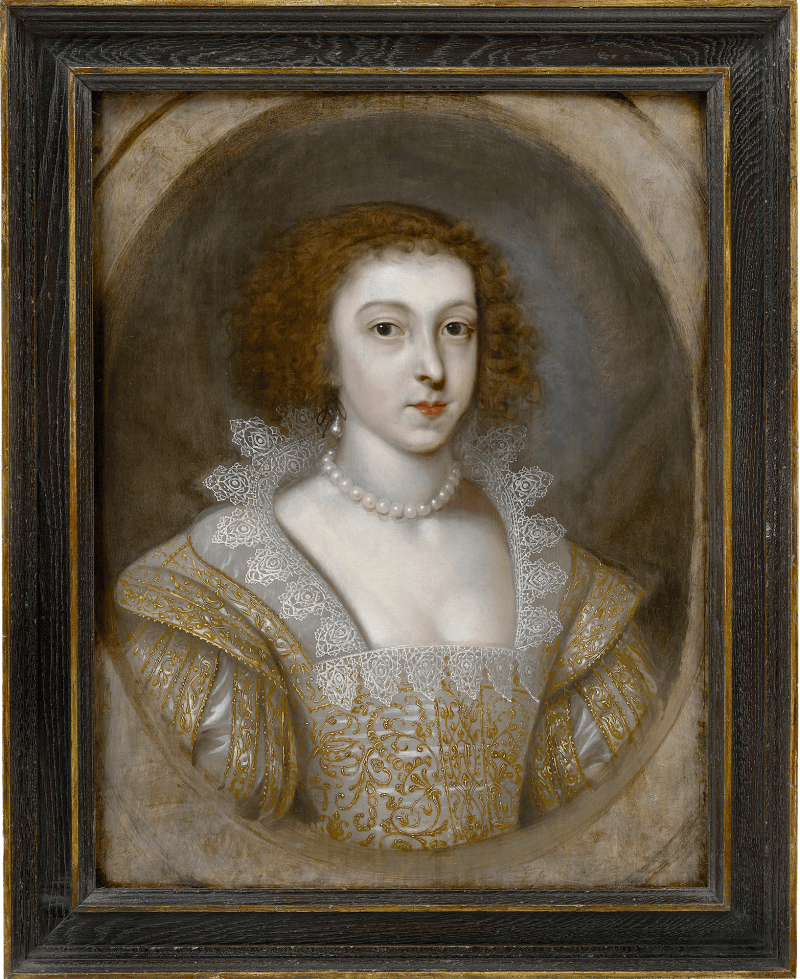We are grateful to Tabitha Barber, Jane Eade and Edward Town for their assistance when writing this catalogue note.
The present work was painted by Joan Carlile (1606-1679), one of the first professional female portrait painters working in Britain. Recently discovered in Australia, it is both an exciting addition to her oeuvre and a crucial contribution to the study of black subjects in British art.
Joan Carlile was an artist whose position within the narrative of British art is only now beginning to emerge. Following her death, she slipped into art historical obscurity, and it was only much later, in 1954, with the publication of an article in the Burlington Magazine, that her name was adequately reinserted into the canon of British art.[1] As well as correcting numerous biographical inaccuracies (Joan was mistakenly called ‘Anne’ for many years), the article also expanded her recorded oeuvre and listed eight works by or attributed to her hand. Since its publication,...
We are grateful to Tabitha Barber, Jane Eade and Edward Town for their assistance when writing this catalogue note.
The present work was painted by Joan Carlile (1606-1679), one of the first professional female portrait painters working in Britain. Recently discovered in Australia, it is both an exciting addition to her oeuvre and a crucial contribution to the study of black subjects in British art.
Joan Carlile was an artist whose position within the narrative of British art is only now beginning to emerge. Following her death, she slipped into art historical obscurity, and it was only much later, in 1954, with the publication of an article in the Burlington Magazine, that her name was adequately reinserted into the canon of British art.[1] As well as correcting numerous biographical inaccuracies (Joan was mistakenly called ‘Anne’ for many years), the article also expanded her recorded oeuvre and listed eight works by or attributed to her hand. Since its publication, many more works by Carlile have come to light, and we now have a clearer understanding of her life and work.[2]
Carlile was born around 1606 and in 1626 married Lodowick Carlell (1601/2-1675) (called ‘Carlile’), a poet, dramatist and one of the gentlemen of the Privy Chamber to Queen Henrietta Maria (1609-1669). By 1637, Lodowick had been appointed Gentleman of the Guns and Bows to King Charles I (1600–1649) and Keeper of Richmond Park—a post he continued to hold during the Interregnum, albeit under less favourable terms.[3] Carlile was also a royal servant and was briefly the Queen’s Laundress (of the body linen), which was a well-renumerated role.[4] Following Lodowick’s appointment, the Carlile family moved into Petersham Lodge in the north-west corner of Richmond Park.[5] By this time, Carlile had already established herself as an artist, albeit in an amateur capacity; writing in 1706, the art historian Bainbrigg Buckeridge (1668-1733) described how Carlile ‘…Copy’d the Italian Masters so admirably well, that she was much in favour with King Charles I, who became her Patron, and presented her and Sir Anthony Van Dyck (1599-1641) with as much Ultra-marine at one time, as cost him above 500 L [pounds].’[6] This rare and expensive pigment is used generously in one of Carlile’s earliest known works – a portrait of a lady, probably Catharine Murray, later Countess of Dysart (d. 1649), painted in around 1640 (fig. 1).[7] It is small in scale, measuring 22 cm high, which indicates that Carlile, like many of her contemporaries, was receptive to the market for more portable likenesses.[8] Catharine was married to William Murray (c. 1600-1655), a close companion of Charles I who was later created Earl of Dysart. Murray held the lease of the manors of Ham and Petersham and almost certainly knew the Carliles as neighbours.[9] Later in the 1640s, Carlile painted a group portrait of Elizabeth Murray (1626-1698), daughter of William and Catharine, with her first husband, Sir Lionel Tollemache (1624-1669), and her sister, Margaret Murray (c.1638-1682), who later married the 1st Duke of Lauderdale (1616-1682) (fig. 2).[10] It reveals a fusion of influences, most clearly Van Dyck, whose full-length portraits of elegant women bedecked in shimmering silks Carlile would certainly have been familiar with.
It was around this time that Carlile painted her most celebrated work – a group portrait of the Carlile family with Sir Justinian Isham (1610-1675) in Richmond Park (fig. 3). It was painted around 1649–50 and demonstrates both Carlile’s skill as a painter and the social standing her family enjoyed in the years preceding the Interregnum. Carlile is assumed to be the figure on the far left, which constitutes the first self-portrait by a British woman artist.[11]
Following the Civil War, Carlile remained a quiet supporter of the crown. According to Bishop Duppa (1589-1662), a former royalist advisor who was exiled to Richmond during this period, by 1653 Carlile had ambitions to paint professionally and move to London “[…] where she meanes to make use of her skill to some more Advantage then hitherto she hath don.”[12] This decision was probably also prompted by the loss of income that Carlile and Lodowick previously enjoyed as royal servants.
Carlile and her family relocated to Covent Garden, a thriving artistic quarter where leading portraitists such as Peter Lely (1618–1680) and Samuel Cooper (1609–1672) maintained studios. Carlile’s work from this period is distinctive, and the small number of surviving examples by her hand indicates that she specialised in a type of reduced-scale full-length portrait unique in British art at this date. In many of her larger portraits, Carlile positioned the sitter before expansive landscapes. However, unlike some of her contemporaries, who used backgrounds only suggestively, her settings were often rendered with considerable detail.
It is interesting to note that the majority of the sitters in Carlile’s surviving portraits are women, raising the question of whether, as a female portraitist, unaccompanied sittings with male sitters would have proved too problematic. Against this complex backdrop of societal expectations, however, Carlile evidently gained some recognition and in 1658 she was named alongside Mary Beale in a list of notable ‘Modern Masters’ in Sir William Sanderson’s Graphice.[13]
The present work, depicting a female sitter in half-length with a black attendant, is of an unusual format and is the only known example of its type by Carlile to have come to light thus far. The identity of the lady remains unknown, and there are no meaningful clues to help establish an identification. Given the relatively small number of surviving works by Carlile, little can be gleaned by comparison with those of identified sitters. However, as more works by her hand come to light, a clearer understanding of her circle of patronage might be possible, which would in turn help to identify the lady portrayed here.
The present work reflects the type of patron Carlile likely attracted, who desired the conspicuous display of wealth afforded by a full-length portrait, but in a format that was more affordable and practical for a domestic setting. The expression of prosperity in portraiture at this date was shaped in part by global exploration and expansion, a dynamic clearly reflected in the present work. In 1654, Oliver Cromwell (1599-1658) led an expedition to the West Indies to expand England’s overseas empire, and the following year invaded and captured Jamaica, establishing a foothold in the Caribbean. Later in 1660, the Company of Royal Adventurers Trading to Africa (later restructured as the Royal Africa Company) was chartered, which granted it a monopoly over the trade of gold, silver, ivory and enslaved Africans. Although this work predates Britain’s dominance in the Atlantic slave trade, Black figures at this date nonetheless occupied a symbolic place within the visual language of elite culture and began to appear more frequently in portraiture.[14] This motif gained popularity after the restoration of Charles II (1630-1685) in 1660, when closer ties with European courts—where Black servants and enslaved individuals were more prevalent—were established.[15]
Carlile would have been aware of this emerging vogue for depicting black figures in portraiture. She was, of course, a neighbour of the Countess of Dysart, whose portrait, painted by Sir Peter Lely in 1651, also includes a black attendant (fig. 4).[16] In Lely’s portrait, the attendant is highly animated, indicating that the artist likely based this figure on life-sittings with a studio model. In the present work, however, Carlile is known to have based the depiction of the figure on a print after Titian’s Portrait of Laura Dianti (late 1520s) (fig. 5), one of the first formal portraits in Western art featuring an enslaved African person. The Titian portrait was engraved by Aegidius Sadeler (1570–1629) in Prague sometime between 1600 and 1630 and circulated in Europe by the early 1640s.[17] Carlile no doubt studied the print, a copy of which was likely in the collection of a friend – perhaps the Earl of Dysart, a renowned collector.[18]
The trope of black attendants in portraiture persisted in Britain until the mid-to-late 18th century, when public attitudes towards slavery changed, and it became less acceptable to depict black people in a derogatory manner. The present work, therefore, is an important early record of a moment in English history when a new visual language was being sought to reflect individual and national aspirations of prosperity and growth.
[1] Margaret Toynbee and Gyles Isham, ‘Joan Carlile (1606?-1679) - An Identification’, The Burlington Magazine, Vol. 96, no. 618 (1954) pp. 273-277.
[2] For a checklist of known paintings by or attributed to Joan Carlile as of 2019, see Bendor Grosvenor, Bright Souls: The Forgotten Story of Britain’s First Female Artists, (exh cat., London, 2019), pp. 43-33.
[3] Tabitha Barber, Now You See Us: Women Artists in Britain 1520-1920 (exh cat., London, 2024), p. 36
[4] Tabitha Barber, Now You See Us: Women Artists in Britain 1520-1920 (exh cat., London, 2024), p. 3
[5] Margaret Toynbee and Gyles Isham, ‘Joan Carlile (1606?-1679) - An Identification. The Burlington Magazine, Vol. 96 no. 618 (1954) p.275.
[6] Margaret Toynbee and Gyles Isham, ‘Joan Carlile (1606?-1679) - An Identification’, The Burlington Magazine, Vol. 96, no. 618 (1954), p.276.
[7] Thirlestane Castle, Scotland
[8] A further example by Carlile, painted on a small scale on copper, was previously with Philip Mould & Company and is now in the collection at the Museum of Fine Arts, Houston.
[9] Bendor Grosvenor, Bright Souls: The Forgotten Story of Britain’s First Female Artists, (exh cat., London, 2019), p.9
[10] National Trust, Ham House, Surrey.
[11] Bendor Grosvenor, Bright Souls: The Forgotten Story of Britain’s First Female Artists, (exh cat., London, 2019), p.9
[12] Margaret Toynbee and Gyles Isham, ‘Joan Carlile (1606?-1679) - An Identification’, The Burlington Magazine, Vol. 96, no. 618 (1954), p. 275. Retrieved from http://www.jstor.org.ezproxy2.londonlibrary.co.uk/stable/871403
[13] William Sanderson, Graphice, The Use of the Pen and Pensil. Or, The most Excellent Art of Painting, London 1658, p.20.
[14] Kim Hall, Things of Darkness: Economies of Race and Gender in Early Modern England (Ithaca,1995), p. 211
[15] David Bindman, “The Black Presence in British Art: Sixteenth and Seventeenth Centuries”, in Europe and the World Beyond, part 1 of From the “Age of Discovery” to the Age of Abolition, vol. 3 of The Image of the Black in Western Art, gen. eds. David Bindman and Henry Louis Gates Jr. (Cambridge, MA, 2010), p. 256. Quoted in Hannah Lee, ‘“Your Most Obedient and Faithful Servant”: Peregrine Tyam and the Representation of Black Sitters in Early Modern British Portraiture’, British Art Studies, Issue 26 (May 2025), p. 4.
[16] Ham House, Surrey (NT 1139940).
[17] This composition was later circulated more widely as a mezzotint produced by Richard Tompson between 1675 and 1688.
[18] A further portrait by Carlile, showing an elegant lady full-length in a landscape, accompanied by an enslaved black child, has also recently come to light. It is known only from a black and white image and was previously misattributed to Henry Stone (1616-1653) (sold Bonhams, 31 October 1996, lot 223). We are grateful to Edward Town for identifying this work and for bringing it to our attention.
